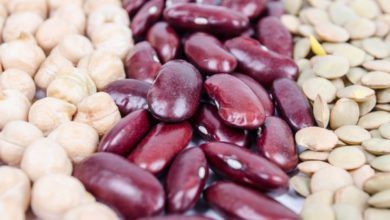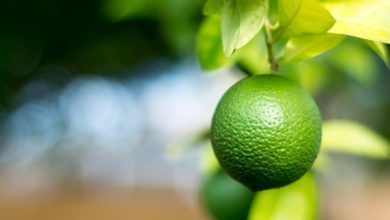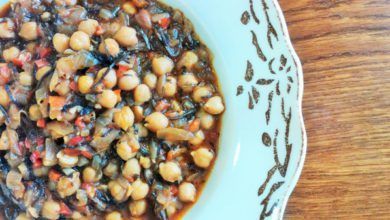Winter is the time of maximum closure, the darkest time of the year, with very short days, cold and humidity. In macrobiotic terms: the most yin time of the year.
In winter the energy slows down. Everything seems to move at a slower pace. This is very clearly reflected in nature. The energy which previously was in the trunk and branches of the trees moves now down to the roots. All the energy moves inwards trying to accumulate reserves for the arrival of spring. Some animals even hibernate to accumulate all their heat inside.
In the same way, we also need to close our body and keep the energy and body heat. That’s why we need to nourish ourselves differently. Now, we need food that generates heat, and helps us keep it inside, strengthening and mineralizing.
If we imitate the natural rhythms on nature and we use the winter season to nourish and strengthen us, when spring comes, we will have the capacity to flow with the expansive energy that characterizes spring time.
So, in these months, it is a good idea to choose longer cooking methods. We can use more fire and more pressure, more oil and salt and less water. Soups, vegetable purees, beans stews, long sautéed vegetables or oven baked dishes will create the warmth we need in these cold months.
We should reduce raw food, salads and cold drinks to a minimum. If we listen to our bodies, we will realize that we no longer crave refreshing dishes with plenty of fluids or cold drinks, but consistent and warming dishes.
This time of year is ideal to replenish our reserves of minerals, trace elements, and fats wisely.
If we eat too much fat and animal products to warm ourselves, we will probably get to spring feeling heavy and lethargic and our energy will not flow with the expanding and rising energy of spring.
Therefore, we will feel tired, sleepy and probably suffer from allergies and fatigue. All these symptoms usually indicate that the liver is overloaded trying to debug the excess of toxins accumulated in the body during the winter months.
However, if we use vegetable and grain stews, they will warm us up and keep our body clean.
Harmonizing food
Grains: you can increase the amount of grain consumed with each meal to make it more consistent. A typical winter grain is buckwheat because it is very calorific and creates the contraction we need in cold months to keep the body heat. But you can also use millet, oats, and wheat varieties to prepare nourishing creams for breakfast and hearty dishes.
Beans: Now is the time to prepare braised lentils and beans stews. The azuki bean is ideal for this time of year. It strengthens our kidneys. Cooked with onions and squash will make a sweet and delicious dish.
Vegetables: The best for this season are the roots, as they provide lots of minerals and are ideal for long cooking, warming our bodies in depth.
Try preparing a parsnip or kohlrabi cream. Prepare a “papillote” with carrots, onions, turnips, sweet potatoes…. add some bay leaf … and what about a touch of cinnamon?
Don’t forget to include a bit of something cool in your dishes, you can prepare a little pressed salad with grated radish, turnip, daikon, green or red cabbage.
Green vegetables are at their best this time of the year. Use them to give a touch of green to your dishes and plenty of calcium and magnesium to your body: Brussels sprouts, kale, broccoli, cauliflower leaves…. Can be quickly sauté or blanched to keep all their minerals and vitamins. They are good sources of vitamin C and folic acid.
Seaweed: Increase your intake to get extra vitamins and minerals that strengthen your body and help you face the cold.
They are very easy to use. You can use “kombu” when cooking beans. It will reduce the cooking time and make them more tender and digestible. Kombu has 8 times more calcium than milk is a very good source of Iodine.
You may want to fry it as chips. Use directly without soaking, and add a squeeze of lemon afterwards, you’ll be amazed how nice they taste!
Fruit: This time of year our body needs to close and keep warm and raw fruit produces the opposite effect: it opens our pores and refreshes our body. So, cooked fruit is a good option now.
You can prepare delicious stewed apples and pears. No need to use sugar, if you add a pinch of salt, it will help bring out the natural sweetness of the fruit. You can also add dried apricots and raisins to give more sweetness.
Seeds and Nuts: Chestnuts are very beneficial at this time of the year. You can add almonds, hazelnuts, walnuts and pine nuts to your breakfast, or take them as a snack between meals.
Seasoning: Use warm spices such as nutmeg, cumin, cinnamon and cloves. And salty seasoning with closing and warming energy: natural sea salt, miso, shoyu or tamari would do great!
Cook your food with love… and enjoy the winter!






Hello
I’m just starting with macrobiotic and loving your articles about the seasons.
I would like to know if there’s an article about cooking for autumn.
Thank you
Ana
Thank you Ana!
Find here the link for the autumn cooking… https://macrosano.com/macrobiotic-food-for-autumn/?lang=en
Love,
Isabel